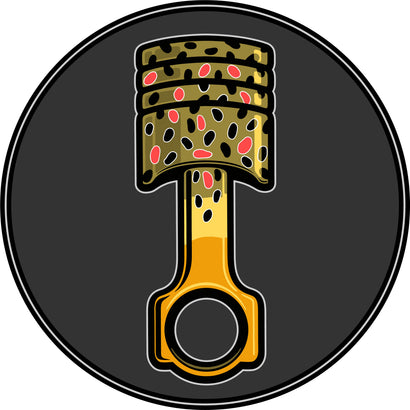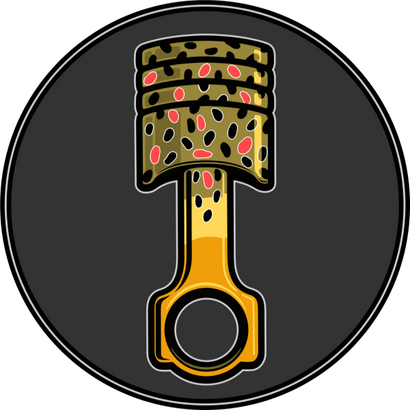Ed McCoy is part of the Mangled Fly guide group and one of Michigan's most experienced and diverse fly fishing guides, from trout, smallmouth, steelhead and musky - he does it all.
Last fall he was able to test and review the new Echo Musky fly rods. We were lucky enough to pick his brain about the rods and how he fished them.
1. First, tell us about yourself and your musky guiding
My Muskie guiding primarily focuses on early fall. As a multi-species guide in Northern Michigan I have a pretty full calendar for most of the year. This time frame allows me to expand on the diversity of fishing opportunities that I have available for interested anglers. This is the time of year that Muskies begin to exit their typical summer feeding patterns and become more active feeders heading into the fall.
2. What kind of water are you fishing? Depths, structure, water temperatures, season, river or lakes?
My primary focus is on rivers and small lakes that have established Musky populations. Water temps are typically in the mid 60’s and dropping as we move through September. Typically we are hunting fish in the six to twelve foot depth changes along vegetative cover and hard structures such as log jams and beaver lodges.
3. Musky are notoriously difficult to catch, what are your biggest challenges in your musky fishing?
The biggest challenges we encounter are casting larger flies efficiently at distance. Getting your flies into the hunting zone consistently is step 1. Fly animation and proper boat-side techniques, such as a J- turn or Figure 8, are also critical and can ultimately determine your success day to day.
4. Which length did you fish and why did you prefer it for your fishery?
I was very fortunate to have a chance to demo the new Echo Muskie Rod this fall in the 8’8” 11 wt version. This rod met the majority of my needs fishing in variable habitats. My primarily focus in early fall is on smaller watersheds with average casts in the 40-60 foot range. This rod was very effective for the run and gun style I employ in the early fall and proved to be a valuable tool for success. The Echo Muskie Rod is very accurate and delivered flies of various sizes with ease.
5. Fly size and design is a critical part of musky fishing. What size and type of flies do you like fishing on your Echo Muskie fly rods?
During the timeframe I target Muskies fly size can depend greatly upon conditions such as lighting, water temperature, water clarity, and flow. The best overall size for success would be flies in the 7” to 8” range. At times I will fish larger patterns pushing 10” to 12” in overall length.
I tend to fish a lot of Buford style baitfish patterns under normal conditions as they are easy to cast and are easy to animate. The limitation with this type of fly is how deep you can fish it. If I need to get my fly deeper, or I want a more realistic action, I will fish more flies in the Game Changer format which arguably are hard to beat for realistic movement, especially boat side in a figure 8.
6. Fly lines are very important to musky fishing. What fly lines do you like to use on your Echo Muskie rod?
The Scientific Angler Sonar Musky and Sonar Titan Sink 3/ Sink 5/ Sink 7 in 450 grain equivalents would be my preferred lines for most of my Muskie fishing. There are also applications for intermediate lines such as the SA Sonar Titan Intermediate/ Sink 3/ Sink 5 or Sonar Titan Full Intermediate. When fish are neutral, or water temps are colder, longer pauses throughout the retrieve can trigger strikes or follows under tougher conditions.
7. What are the best features of the Echo Muskie rods?
The first thing I noticed about the new Echo Muskie Rod was how light it felt in the hand, especially considering it is listed as an 11 wt. It honestly has the same feel as a 8wt or 9wt rod of the same length. With that being said, this rod has tremendous power in the butt section and a lighter action in the tip which translated into an easy casting rod you can fish all day.
The second best feature is the composite handle and extended fighting butt. The handle has two features that jump right out at you at the first glance. A tapered composite section for holding the rod in the proper position throughout the retrieve and a comfortable traditional cork handle for casting. The extended fighting butt completes the rods versatility as it allows you to use two hands during the figure 8 or even to make a two handed overhead cast. Both attributes will save your arm and body from added stresses brought about from casting larger flies.
8. What does this rod do that other musky rods don’t do?
The obvious answer to me was the ability to cast and fish larger flies all day. Muskie fishing is a very taxing sport and can wear an angler out in a relatively short period. This rod is one of the few 11 wts that I have been able to cast effectively for long periods of time. Its versatility allows you to throw small to large flies further and longer than most rods available on the market today.
9. What kind of boat are you fishing the rods out of?
I fish primarily fish for Muskie from a low side power boat or my drift boat. The Echo Musky Rod in the 8’8” length was perfect for my mode of fishing. The longer 9’4” version was designed for bigger open water and boats with higher sides.
10. How would you describe the action of the rods?
This rod has the feel of a medium-fast action rod, but casts like a fast action rod. The dampening in the tip makes the rod load quicker and easier at short distances allowing you to cast further with fewer back casts.
11. What were the most surprising characteristics of the rods?
The Echo Musky Rod has a lot of hidden power and allows the angler to quickly load the rod with ease. It feels very light in the hand, but don’t let that fool you as it has a lot of hidden power and can easily handle larger Game Changers which are a bit more difficult to cast at distance. The Echo Musky Rod also has a lot of lifting power which allows you to handle bigger fish with ease, especially with boat side strikes!



